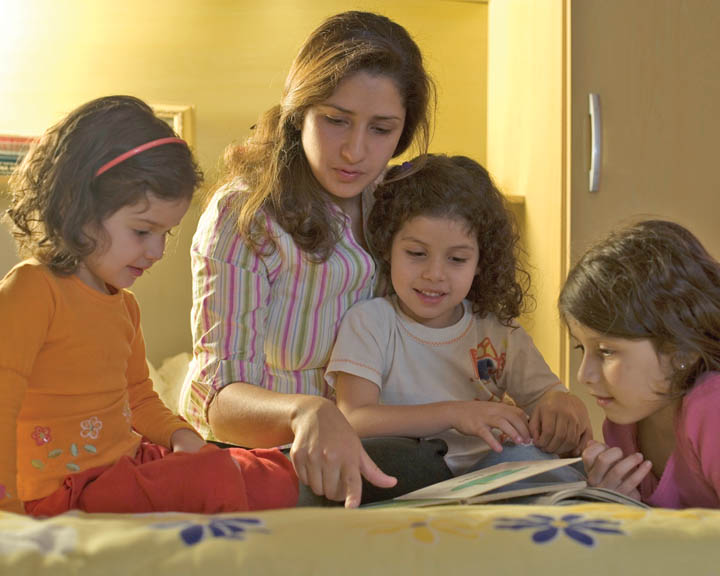Read Part 1: What Your Child Needs Before He Reads
 If you’re considering teaching your child to read or if you just want him to be prepared to learn in school, make sure he has the necessary skills before he starts. This will make it more likely he will be successful, and success leads to loving to read.
If you’re considering teaching your child to read or if you just want him to be prepared to learn in school, make sure he has the necessary skills before he starts. This will make it more likely he will be successful, and success leads to loving to read.
In the previous article, we talked about the need for a good vocabulary and sentence structure, wide experience with life, and basic book-handling skills. In this article, we’ll talk about some additional skills your child needs before starting on reading.
Imagining
The first thing your child needs is to be able to turn words into objects or pictures. This doesn’t mean he needs to be an artist. Rather, if he reads about a big green dragon with a scary face, he needs to be able to picture this in his mind. Otherwise, reading is a very dull experience. You want his stories to come alive for him.
Set out several related toys, such as toy dragons of different colors and styles. Begin to describe the toy and let your child choose the right one. Treat it as a guessing game, not a test. Keep it light and don’t worry if there are mistakes. He will improve with practice.
Sample:
“I’m thinking of a dragon with great big eyes. Can you guess which one? Yes, he has big eyes, but the one I’m thinking of has great big eyes and a blue nose. Can you guess which one?” Keep adding clues until he finds it.
If your child draws, let him try drawing a dragon you’ve described. This might be a bit hard for most children, though. Another way to do this is to find coloring book style pictures of dragons and cut them into parts. Set out three heads, three bodies, and three tails. As you describe the dragon, let him “build” it by finding the right pieces.
Whenever you’re reading chapter books, talk about the things described in the book. Let him practice describing things to you. As he learns to describe, he will come to understand how others describe as well.
Matching:
Matching is an important part of reading. A child needs to know the letter A is always the letter A, and c-a-t is always the word “cat.”
Start by having your child match real objects. Set out toys or household items, making sure you have several of each kind, and have your child put the ones that are just alike together.
Children enjoy treasure hunts. Draw a simple picture of Noah’s ark on a large sheet of paper. Cut open a large door. Around the room, place toys or coloring book cutouts of animals around the room in plain sight. The animals should be the same, meaning if you have two cows, the cows should be identical to each other. Keep one of each picture with you.
Tell the story of Noah’s ark in simple terms. “Noah was a prophet. A prophet talks to God and God talks to the prophet. God talked to Noah and told Him the people were being very bad. God wanted them to be good. He asked Noah to please go and tell the people to be good. Noah went outside and told the people, “Be good!” But the people said, “We don’t want to be good. We like being bad.” Was that a good thing? No, it wasn’t. God was very sad. When He saw they were not going to be good, He said he would send a flood. A flood means there was so much water it got very high. He wanted Noah and his family to be safe, because they were good. He told Noah to build an ark. An ark is a big boat, like this one. (Show the picture you drew.) Let’s pretend we’re building an ark. Gather the wood. Cut the wood. Hammer. Lift up the board. Hammer some more.” (Repeat as desired.) When the ark was all done, God told Noah to gather the animals to go on the ark with him. God wanted at least two of every animal. Look here. I have some animals, but they all need friends, so they can go on the ark. I have one dog. Can you find the dog’s friend? Find the animal that matches this one.” By giving the instruction twice, you’re teaching him what the word “match” means.
When he finds a match, let him push them through the door of the ark. If he brings the wrong animal, just say, “Oh, you found a cat. Let’s put the cat right here until we find his friend.” Remember, this isn’t a test. It’s only a fun game that happens to have an educational aspect to it. Don’t spoil it by being disappointed or scolding.
Once he can match pictures and real items, he’s ready to learn colors and shapes.
